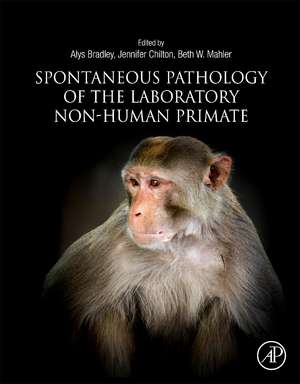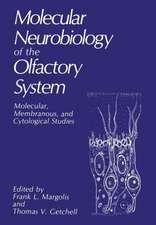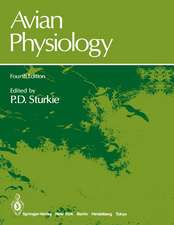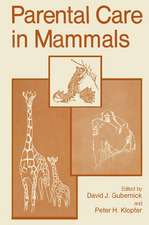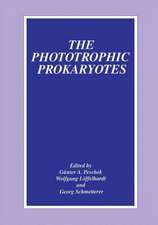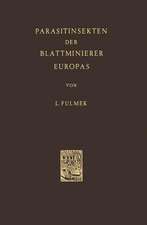Spontaneous Pathology of the Laboratory Non-human Primate
Editat de Alys Bradley, Jennifer Chilton, Beth Mahleren Limba Engleză Hardback – 23 iul 2023
Pathologists often face a lack of suitable reference materials or historical data to determine if pathologic changes they are observing in monkeys are spontaneous or a consequence of other treatments or factors.
- Contains color illustrations that depict the most common lesions to augment descriptions
- Covers descriptions that are compliant with the International Harmonization of Nomenclature and Diagnostic Criteria (INHAND) guidelines set forth by the Society of Toxicologic Pathology (STP)
- Provides pathologists with common terms that are compliant with the FDA’s Standard for Exchange of Nonclinical Data (SEND) guidelines
Preț: 1406.44 lei
Preț vechi: 1799.79 lei
-22% Nou
Puncte Express: 2110
Preț estimativ în valută:
269.13€ • 287.79$ • 224.39£
269.13€ • 287.79$ • 224.39£
Carte tipărită la comandă
Livrare economică 11-25 aprilie
Preluare comenzi: 021 569.72.76
Specificații
ISBN-13: 9780128130889
ISBN-10: 0128130881
Pagini: 626
Dimensiuni: 216 x 276 mm
Greutate: 1.95 kg
Editura: ELSEVIER SCIENCE
ISBN-10: 0128130881
Pagini: 626
Dimensiuni: 216 x 276 mm
Greutate: 1.95 kg
Editura: ELSEVIER SCIENCE
Public țintă
The primary audience is veterinary toxicologic pathologists working in the field of safety assessment in pharmaceutical or agrochemical fields. The book could also serve as a reading list text for veterinarians studying for:- Pathology board exams – Diploma of the American College of Veterinary Pathology, Diploma of the European College of Veterinary Pathology, Diploma of the Japanese College of Veterinary Pathology, Diploma of the Japanese Society of Toxicological Pathology, Fellowship of the Royal College of Pathologists
- Laboratory Animal Medicine Diploma exams (European and American)
- Undergraduate Veterinary exams – exotic/zoo animal medicine
Cuprins
1. Introduction to 1st Edition
2. Choice of Primate species
3. Regulatory issues in the use of primates
4. Infectious Diseases
5. Clinical Examination
6. Salivary glands
7. Oral Cavity
8. Esophagus and Stomach
9. Small and Large Intestine
10. Liver
11. Exocrine Pancreas
12. Kidney
13. Urinary bladder, ureter, urethra
14. Brain
15. Spinal Cord and Nerves
16. Eye and associated glands
17. Skeletal Muscle
18. Bone and Joints
19. Skin and subcutis
20. Specialized sebaceous glands
21. Mammary Gland
22. Respiratory tract
23. Immune System
24. Bone Marrow
25. Female Reproductive Tract
26. Testis
27. Male sex glands
28. Heart
29. Blood Vessels
30. Thyroid
31. Parathyroid
32. Pituitary
33. Adrenal
34. Endocrine Pancreas
35. Hematology
2. Choice of Primate species
3. Regulatory issues in the use of primates
4. Infectious Diseases
5. Clinical Examination
6. Salivary glands
7. Oral Cavity
8. Esophagus and Stomach
9. Small and Large Intestine
10. Liver
11. Exocrine Pancreas
12. Kidney
13. Urinary bladder, ureter, urethra
14. Brain
15. Spinal Cord and Nerves
16. Eye and associated glands
17. Skeletal Muscle
18. Bone and Joints
19. Skin and subcutis
20. Specialized sebaceous glands
21. Mammary Gland
22. Respiratory tract
23. Immune System
24. Bone Marrow
25. Female Reproductive Tract
26. Testis
27. Male sex glands
28. Heart
29. Blood Vessels
30. Thyroid
31. Parathyroid
32. Pituitary
33. Adrenal
34. Endocrine Pancreas
35. Hematology
Recenzii
“[A] reliable resource of consolidated references for pathologic processes in non-human primates,... a worthy objective as there are few dedicated pathology books in this arena.... This book is for pathologists working on primates in safety assessment studies and diagnostic veterinary pathologists working on non-human primates…. [and] would also be an asset for pathology residents and veterinary students seeking careers in laboratory animal medicine or laboratory animal pathology…. The systems chapters are the best aspect of the book. They provide good detail on pathologic processes based on organ system…. Overall, this is a useful book that consolidates knowledge from scattered resources on non-human primate pathology. Pathologists, residents, and students can use this book as a good starting point for disease investigation. --©Doody’s Review Service, 2024, Jonathan Samuelson, DVM MS (University of Illinois College of Veterinary Medicine)
